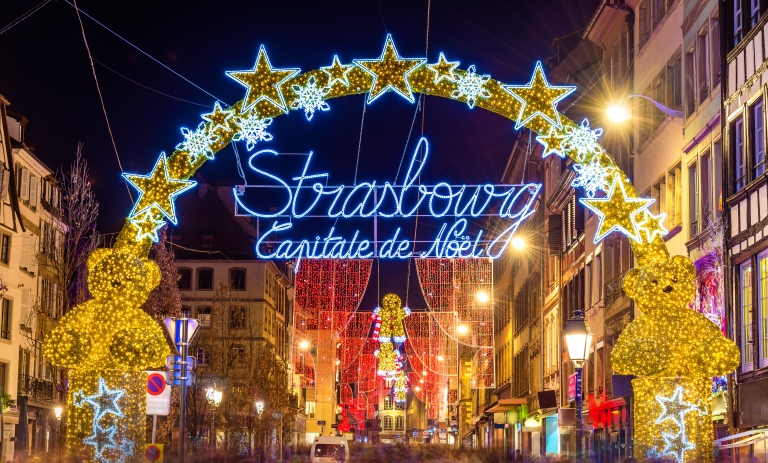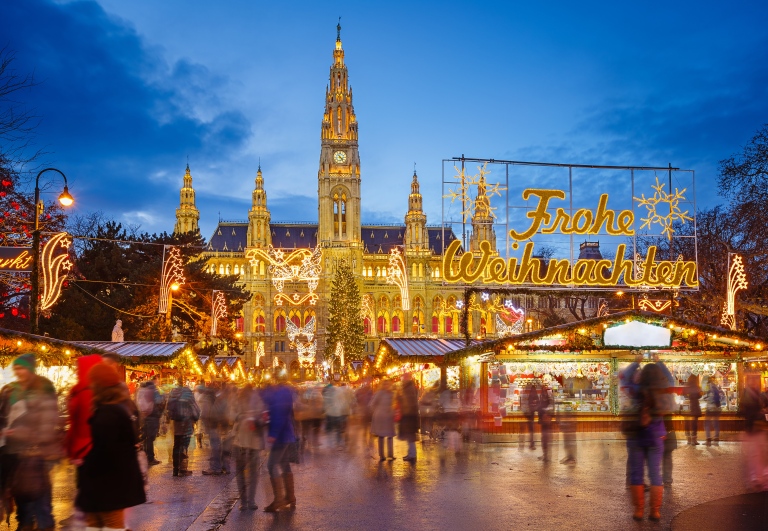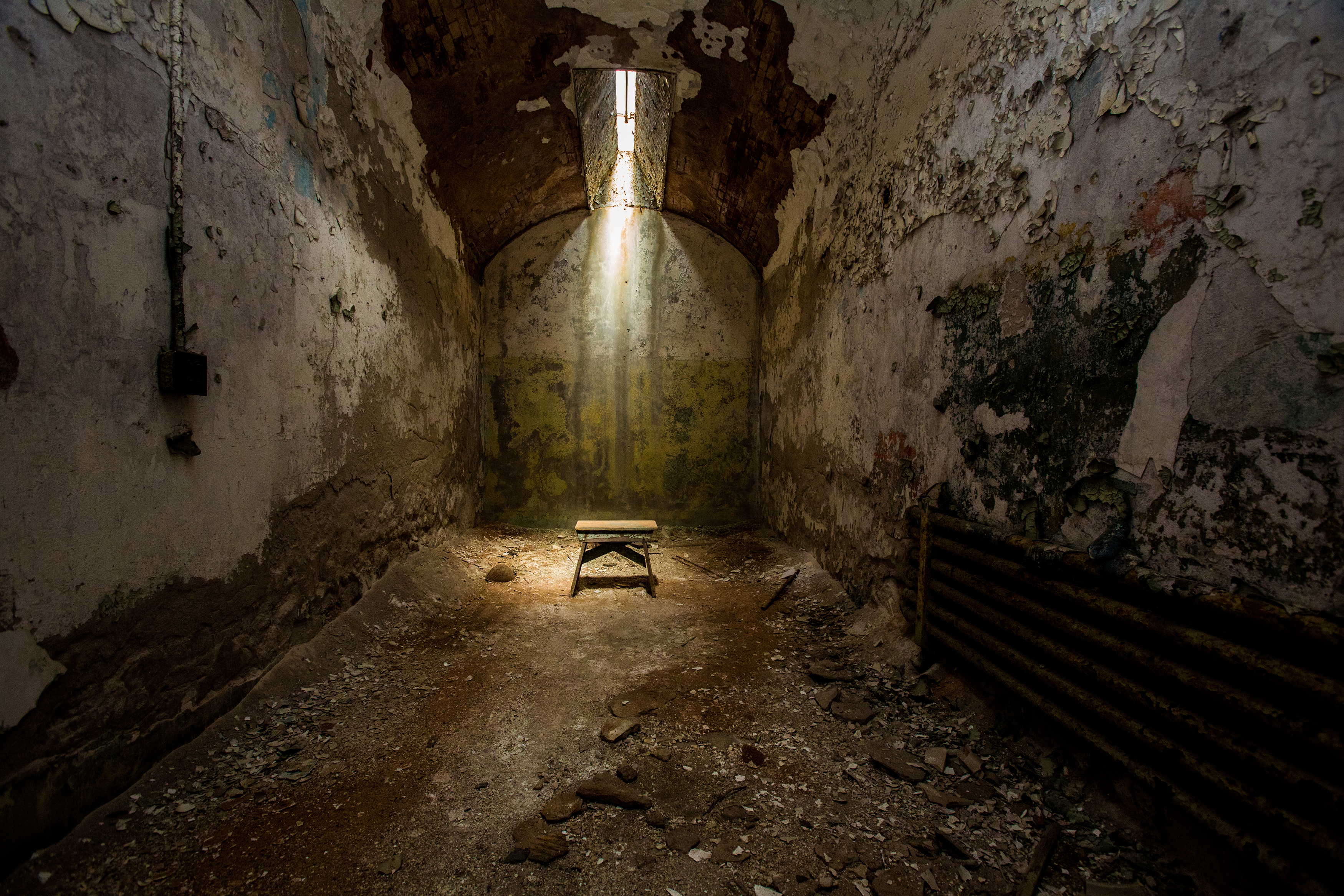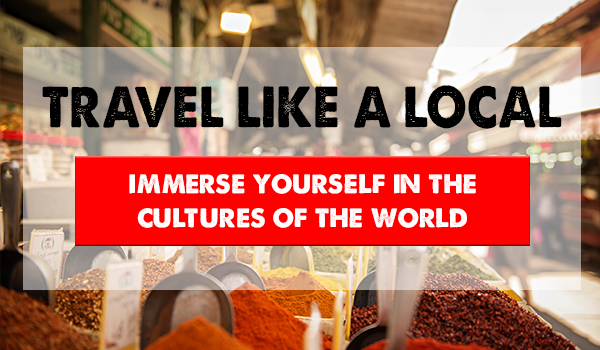Each year leading up to Christmas, holiday markets pop up across Europe, enlivening town squares, amusement parks, and shopping districts. Follow the scent of mulled wine and the warm glow of sparkling lights to a shopper’s paradise filled with treasures, gifts, and epicurean treats. Each country has their own unique flair—read our insider’s guide for an introduction to the best of the best.
Get Crafty in Vienna, Austria
Tracing back to the 13th century, Viennese Christmas markets are some of the most enchanting and traditional. In modern times, they have expanded to 20 main markets, yet despite their growth, they still maintain the charming Old-World facade of independent craft vendor stalls. Each year, an impressive three million rosy-cheeked shoppers visit the largest market in Rathausplatz square, facing the neo-gothic Rathaus (Town Hall). Tourist and locals alike splurge on candied fruits, roasted chestnuts, and drink Weihnachtspunsch, a spiced “Christmas punch” made of wine, brandy, or schnapps, and sweetened with warm fruit juices. After enjoying a few sips, shop for handcrafted toys, beeswax candles, and hand-blown glass ornaments to bring home for the holidays.
Expert tip: Check the schedule for live Christmas concerts and children’s workshops featuring traditional craft gift-making.

Watch out for Elves in Copenhagen, Denmark
It’s impossible not to get into the Christmas spirit in Copenhagen, a city dedicated to design and celebration. Let the 1,800 strands of precisely placed Christmas lights at Tivoli Gardens, the famed amusement park, take your breath away as they drape over lakeside willows. Directed by John Loring, the design director of Tiffany & Co, the gardens are transformed into a winter wonderland whose interior glows just as much as its exterior. Indulge in a cup of gløgg, a piping hot mulled red wine, spruced up with almonds, raisins, cinnamons sticks and cloves, or share a scrumptious apple pancake or æbleskiver, which is an iced doughnut slathered with black currant jam.
Expert tip: Snag handcrafted sweaters, porcelain figurines, and the traditional red shirt, pointed hat, clog-wearing elves called nissers. These tiny elves are adorable, and folklore says that if you leave a bowl of porridge for them, they will bestow gifts upon you.

Nibble on Fruit Cake in Dresden, Germany
Have you ever witnessed four tons of fruit cake being paraded through a German cobblestone street? The tradition dates back to 1434 and continues to this day, where the striezel was carried through the Old Town until it finally reached the entry of the Stiezelmarkt accompanied by the Stollenmädchen, or “Fruitcake Maiden.” Naturally, the thing to try here is the Saxon fruit loaf. Explore the 230 sparkling craft stalls while admiring the famous Christmas Pyramid, a whopping 46-foot-high construction of stacked platforms, that even includes a family friendly carousel.
Expert tip: Try a mug of mulled wine that pairs deliciously with fruitcake or pfefferkuchen (gingerbread.) Look out for hand-carved Nutcrackers to buy—the details are stunning.

Drink Mulled Wine from a Boot in Strasbourg, France
Straddling the French/German border, the Christmas market in Strasbourg is the perfect blend of cultures. Founded in 1570, the traditions have a long lineage making it the finest in France. Listen to carolers while taking a spin around the ice skating rink, and cap off the celebration with huge gulps of mulled wine, drank straight out of a boot-shaped German stein, or beer mug. Leave room for yuletide foods such as bredles, which are small cakes or cookies that come in fun shapes like stars, storks, or Christmas trees. Craving something salty? Opt for the knack, a delectable sausage seasoned with black truffles and wine.
Expert tip: Buy gifts that relate to the white stork, a symbol of good luck in the Alsace region of France. Among the 100 stalls, visitors can browse from a series of ornaments, linens, embroidered pillows, and other gifts and decor.
Centuries before department stores existed, holiday markets were the only place to buy gifts. Now they are historical relics that have hardly changed. Step back in time to experience these gleeful traditions while getting into the Christmas spirit! Contact a Personal Vacation Manager at 800-709-9507 to plan your next vacation, and see Europe’s best holiday markets in person!





